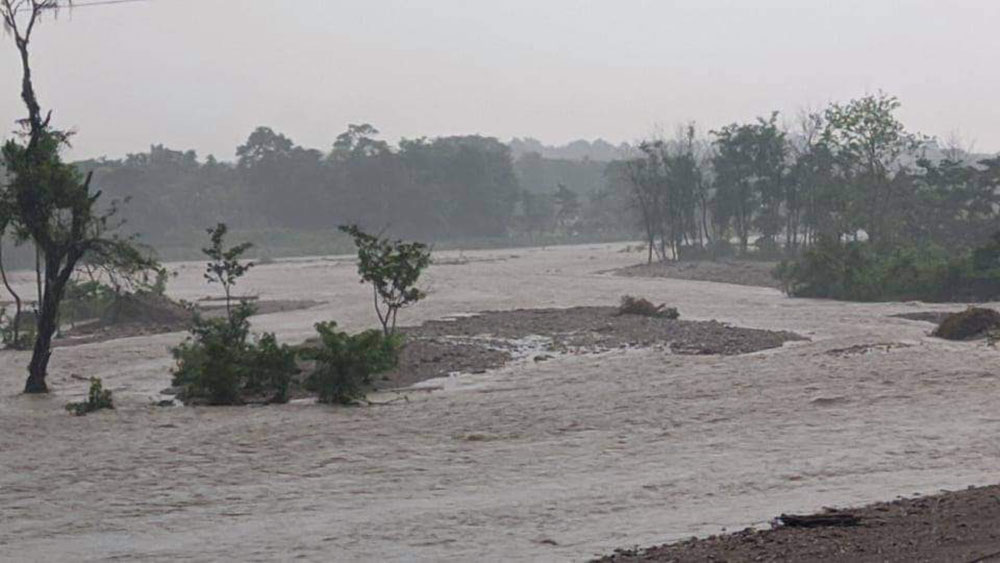Choki Wangmo | Dagana
In the early 1990s, Motilal Gurung, 57, from Sibsooni in Lhamoidzingkha, lost four acres of his land to a flood. After waiting for about two decades, he got 2.9-acre land substitute in 2019.
For residents living along Kalikhola river, the monsoon has become a nightmare.
Motilal Gurung lives 50 metres away from the river and his agricultural fields are located along Kalikhola river. “There is increased risk. A gabion wall was built to protect us from flood, but during monsoon, it changes course and flows towards our village.”
Residents from Lal Bahadur Pradhan’s chiwog lost more than 50 acres of land to flood in 1992. They were not eligible for land substitute since it was not washed away. “One acre of my agricultural land is still under debris. I use it as a cowshed.”
Without land in a safer place, he lives about 400 metres away from the river.
In 2016, the local government (LG) constructed a 600-metre-high gabion wall. “Accumulation on the river bank has increased from the debris deposited but during monsoon, it gets submerged. Water then overflows to our village that is lower than the river bank.”
A resident, Chandra Shaker Koirala said that the flood risk was high in Koilatar and Belaytar chiwogs even.
“During monsoon, people cannot sleep in peace due to the fear of losing their cattle and land to floods and landslides that can be caused by swollen Kalikhola river. Many households are near the river and every monsoon, the farmers are terrified,” he said.
He claims that such risks had been there since he was nine years old. “Today, I am 31 and our village is still going through the same problems. Although the LG officials and the members of the parliament (MP) are aware of the problem, not much has been done to reduce risk on our livelihoods.”
“It is time for interventions by the authorities concerned,” he added.
There are 15 households in Belaytar and 13 in Koilatar.
About five households live near the river source in Dorona.
Residents said that although they approached the officials and relevant agencies, it fell on deaf ears.
“The solution is simple. We need strong gabion walls that are effective in flood protection,” said one resident.
“Gabion wire would be helpful. Communities are forthcoming in carrying out mitigation works but we need support. A gabion wire could prevent boulders and deposits from accumulating.” said Lal Bahadur Pradhan.
In monsoon, he said that the river rises as high as 200-metre mark.
An irrigation canal of four chiwogs above the settlement also posed risk to settlements. “If there was a flood or if the canals burst, we will be washed away,” said a resident.
Villagers claim that the MPs and the minister for works and human settlement visited the area. “They said that they wouldn’t be able to help.”
According to one resident, the LG officials told them to seek support from the central government.
Lhamoidzingkha Gup Surja Bahadur Limbu said that the flood risk was increasing by the year.
Knowing the challenges and risks to people, he said that the LG approached the relevant stakeholders and even informed the ministry of works and human settlement about the risks. “The issue was discussed in Dzongkhag Tshogdu many times.”
“We carried out dredging and excavation works to change the course of the river but the risks are still rampant during monsoon,” Surja Bahadur Limbu said.
Recently, two households in the high-risk area were asked to relocate.
Edited by Jigme Wangchuk


